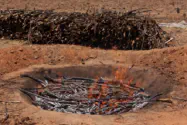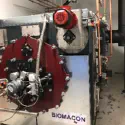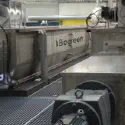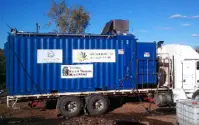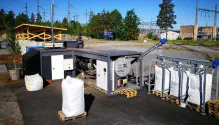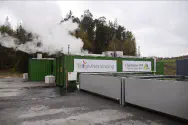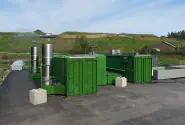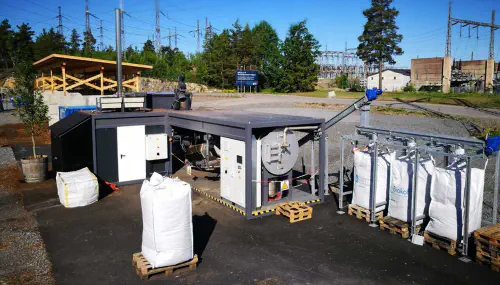
2 - Pyrolys
Pyrolys är termokemisk omvandling där ett (organiskt) material värms upp i en syrefattig eller helt syrefri miljö. Pyrolys är den vanligaste tekniken för produktion av biokol, men det finns även andra termokemiska omvandlingsteknikser för att höja kolhalten i biomassa, såsom torrefiering, hydrotermisk karbonisering (HTC), och förgasning.
Pyrolys av biomassa resulterar i tre huvudsakliga produkter: icke-kondenserbara gaser, flytande oljor eller tjära, samt kol i fast form. Ofta förbränns gaserna och oljan direkt för att utvinna energi. I mer avancerade fall kan oljor och gaser utvinnas, uppgraderas och användas senare för att utvinna energi eller kemiska produkter.
I miljösystem analyser beskrivs pyrolys som en multifunktionell eller multi-produkt process eftersom den leverar ett flertal användbara produkter eller tjänster. Notera att om biomassa i form av avfall pyrolyseras kan ytterligare en produkt definieras, nämligen avfallshantering.
![*Installed biochar production capacity in Sweden over time* [Coming soon: EU data & interactive figure]](2-pyrolysis-survey-units.png)
